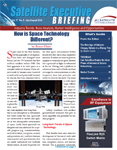European Launcher Developments: A New Space Race on the Continent
By Virgil Labrador, Editor-in-Chief
Los Angeles, Calif., June 2, 2025 - While the United States is launching rockets nearly every other day, and China maintains a steady rhythm of about one launch every five days, Europe—once a dominant force in commercial space—finds itself playing catch-up. The delayed debut of the Ariane 6 and the grounding of the Vega launcher following repeated failures have significantly eroded Europe's competitive position in orbital launch capability.
Yet beneath this narrative of decline, a quieter but promising transformation is underway. Across the continent, a growing number of private space startups are preparing to lift Europe back into contention. Despite a less mature venture capital ecosystem and a scarcity of risk-taking billionaires compared to the U.S., European space entrepreneurship is gaining momentum—from Spain and Germany to France and the United Kingdom.
From Legacy Systems to Startup Innovation
For decades, European access to space was defined by institutional heavyweights: the European Space Agency (ESA) and national champions such as ArianeGroup and Avio. However, these entities have struggled to match the pace and pricing of new market entrants, particularly from the U.S. Ariane 6, heralded as Europe’s flagship successor to Ariane 5, has faced repeated delays. Meanwhile, the smaller Vega C launcher has only recently resumed service after a series of high-profile setbacks.
In response, new players are emerging. The strategic significance of space—spanning defense, telecommunications, climate monitoring, and
|
The next three years will determine whether Europe's startup scene can deliver—and whether the continent can truly reclaim its place among the global spacefaring elite. |
sovereignty—is now widely recognized by European governments. Germany, notably, has established a Ministry for Space, underscoring the continent’s renewed focus on the sector’s geopolitical and economic importance.
The Key Contenders: Europe’s New Generation of Launchers
PLD Space (Spain)
In October 2023, PLD Space made history by launching MIURA 1, the first privately developed suborbital rocket in Europe. Its orbital-class successor, MIURA 5, is targeting a maiden flight in late 2025, though a slip into 2026 appears likely.
Isar Aerospace (Germany)
Germany’s best-funded space startup, Isar Aerospace, raised over US$ 400 million in private capital—more than any other European competitor. In March 2025, its Spectrum rocket attempted its first orbital launch from Norway's Andøya Spaceport, but the mission ended in failure shortly after liftoff. No new launch attempt has yet been announced.
HyImpulse (Germany)
A technological outlier, HyImpulse successfully launched its SR75 hybrid-propulsion rocket from Australia in May 2024. Its orbital rocket, SL1, is scheduled for a 2026 debut from the SaxaVord Spaceport in Scotland. The company’s propulsion system—combining paraffin-based solid fuel with liquid oxygen—is a rare and innovative hybrid approach, promising much lower production and operational cost, greater safety, and sustainability.
Rocket Factory Augsburg (Germany)
Backed by aerospace firm OHB, RFA is developing RFA One, a three-stage small satellite launcher. A significant test failure in 2024 delayed progress by at least a year. Although a first launch is tentatively planned for 2025, the company has yet to publish a firm timeline.
MaiaSpace (France)
Spun off from ArianeGroup in 2022, MaiaSpace aims to develop Maia, a partially reusable micro-launcher with an initial payload capacity below 500 kg. The concept holds promise, but the first launch is unlikely before 2026 or 2027.
Latitude (France)
Formerly Venture Orbital Systems, Latitude is working on Zephyr, a micro-launcher with a 100 kg payload capacity entering the small payload class, which Rocket Lab is leaving by moving from its Electron to Neutron launcher. By targeting the smallsat deployment market, a first launch before 2026 seems unlikely given the absence of a confirmed launch campaign.
Orbex (UK/Denmark)
Based in the UK and Denmark, Orbex plans to launch its Prime rocket—capable of delivering up to 180 kg to LEO—from Scotland's Sutherland Spaceport. The company has faced multiple delays, with a first launch now expected in 2025, although specific details remain unconfirmed.
Technology Outlook: Tradition vs. Innovation
Most of these emerging companies rely on time-tested technologies: liquid- and solid-fueled engines with propellants such as kerosene, propane, or methane. Isar's Spectrum, Orbex’s Prime, and Latitude’s Zephyr all reflect this conventional approach.
HyImpulse from Stuttgart however, offers a striking departure. Its hybrid engine design combines the simplicity and safety of solid propellants with the control and performance benefits of liquid oxidizers. This innovation could mark a significant leap forward in propulsion technology—especially in a continent where risk aversion has long shaped aerospace development.
Europe also benefits from a rich engineering heritage, particularly in Germany. From early pioneers like Hermann Oberth and Wernher von Braun to modern figures such as Hans Koenigsmann (formerly of SpaceX), the legacy of rocketry runs deep—providing both technical credibility and aspirational momentum.
ESA’s European Launcher Challenge: Accelerating Autonomy
To support these efforts, ESA has launched the European Launcher Challenge (ELC), a strategic initiative designed to catalyze the development of a cost-competitive successor to Ariane 6. Modeled on NASA’s COTS and CLPS programs, the ELC aims to harness public-private partnerships and foster market-ready launch services capable of rivalling U.S. and Chinese offerings in both price and cadence.
Conclusion: Europe’s Critical Second Chance
With Ariane 6 and Vega C now returning to operational status and the launch of IRIS²—Europe’s planned secure communications satellite constellation—on the horizon, the institutional groundwork for space autonomy is finally in place. But institutional rockets alone will not be enough.
In a world increasingly shaped by geopolitical tension, climate risks, and the rise of dual-use space technologies, commercial launchers are essential. Europe’s future as a space power depends on the success of not just one, but multiple private ventures. Reliable, affordable, and independent access to space will be a cornerstone of the continent’s resilience and influence in the 21st century.
The next three years will determine whether Europe's startup scene can deliver—and whether the continent can truly reclaim its place among the global spacefaring elite.
--------------------------
 Virgil Labrador is the Editor-in-Chief of Los Angeles, California-based Satellite Markets and Research which publishes a web portal on the satellite industry www.satellitemarkets.com, the monthly Satellite Executive Briefing magazine and occasional industry reports called MarketBriefs. Virgil is one of the few trade journalists who has a proven track record working in the commercial satellite industry. He worked as a senior executive for a teleport in Singapore, the Asia Broadcast Center, then-owned by the US broadcasting company CBS. He has co-authored two books on the history of satellite communications and satellite technology. He holds a Master’s in Communications Management from the University of Southern California (USC). He can be reached at virgil@satellitemarkets.com
Virgil Labrador is the Editor-in-Chief of Los Angeles, California-based Satellite Markets and Research which publishes a web portal on the satellite industry www.satellitemarkets.com, the monthly Satellite Executive Briefing magazine and occasional industry reports called MarketBriefs. Virgil is one of the few trade journalists who has a proven track record working in the commercial satellite industry. He worked as a senior executive for a teleport in Singapore, the Asia Broadcast Center, then-owned by the US broadcasting company CBS. He has co-authored two books on the history of satellite communications and satellite technology. He holds a Master’s in Communications Management from the University of Southern California (USC). He can be reached at virgil@satellitemarkets.com





